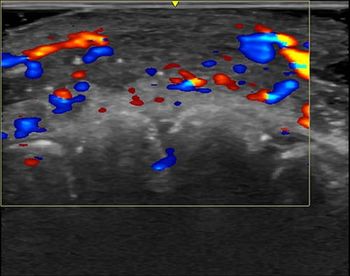
iMPI: An Exploration of Post-Launch Advancements
iMPI technology represents a significant advancement in the field of medical imaging that may potentially revolutionize the way endovascular interventions are conducted.
Cardiovascular diseases are the leading cause of global mortality, with minimally invasive endovascular interventions playing a crucial role in treatment. Despite the benefits, current imaging techniques, such as X-ray fluoroscopy and digital subtraction angiography (DSA), pose challenges related to radiation exposure and the use of nephrotoxic contrast agents.
Introduced in 2005, magnetic particle maging (MPI) employs magnetic nanoparticles as tracers, ensuring high-sensitivity imaging without ionizing radiation. Being a tracer-based imaging modality, MPI leverages the nonlinear magnetization response of nanoparticles to time-varying magnetic fields. Despite its potential, large-scale implementation of MPI had been hindered by technical limitations, such as scanner size and field of view.
However, in an article recently published in Nature Scientific Reports, Patrick Vogel, PhD, and colleagues introduce iMPI, an advanced human-sized MPI scanner designed to overcome these challenges, offering real-time imaging suitable for endovascular interventions. Vogel, of the Department of Experimental Physics V at the University of Würzburg in Germany, is a recognized authority in the field of MPI. Read on for an in-depth interview with Dr. Vogel about this advancement.
Question (Giuseppe Scappatura): In the fast-evolving world of medical technologies, every new imaging technique brings with it the promise of revolutionizing diagnosis and treatment. iMPI, in particular, has garnered significant interest within the medical community. Considering the wide array of imaging techniques available today, what makes iMPI unique and revolutionary compared to traditional methods? What were the primary obstacles in its implementation, and how were they overcome?
Answer (Patrick Vogel, PhD): The MPI technique was introduced in 2005 by the Philips group, aiming to offer an alternative to traditional imaging techniques. iMPI specifically utilizes the positive contrast of an iron-based contrast agent, ensuring high sensitivity since no background body information is displayed. This translates into an accelerated imaging process. While several MPI scanner approaches have been introduced over the years, iMPI has surpassed upscaling challenges, thanks to the new approach for magnetic field generation. This allows for more compact hardware, making iMPI stand out.
Q: The accuracy of any imaging system largely hinges on its ability to trace the target area accurately. Within the context of iMPI, the trajectory of the FFL [field free line] is of paramount importance. The optimization of the FFL trajectory can influence image quality. How did you tackle the challenges in determining the ideal trajectory, and what methods or technologies were used to ensure optimal results?
A: Determining the optimal FFL trajectory was vital to ensuring high-quality images. Initially, we employed a standard sequence, but soon recognized the need to explore alternative trajectories. Collaborating with a small MRI company assisted us in reinventing the console for MPI scanners. Moreover, we explored AI-based reconstruction algorithms to ensure trajectory optimization and image quality.
Q: Calibration is foundational in any imaging system to ensure precise and reliable images. This step is even more critical in innovative systems like iMPI. Given the importance of calibration in iMPI, could you delve into the calibration process you adopted? How did you tackle the unique challenges presented by iMPI's innovative nature, and what protocols were put in place to ensure its reliability over time?
A: The iMPI calibration process was a challenging yet essential task. Every coil is hand-made, so there are variations between them. After mounting the coils, we produced field maps using a small pick-up loop. These maps were then compared to a virtual scanner within simulation software. This detailed calibration allowed us to ensure the precision and reliability of iMPI over time.
In conclusion, the iMPI technology represents a significant advancement in the field of medical imaging, offering a promising solution to existing problems and potentially revolutionizing the way endovascular interventions are conducted. We thank Dr. Vogel for sharing his invaluable knowledge and insights into the future of iMPI and MPI in general.
REFERENCE:
Vogel P, Rückert MA, Greiner C, et al. iMPI: portable human-sized magnetic particle imaging scanner for real-time endovascular interventions. Sci Rep. 13;10472 (2023). doi:10.1038/s41598-023-37351-2
Giuseppe Scappatura is a Radiology Technician at the UOC of Radiology of the Grand Metropolitan Hospital in Reggio Calabria, Italy. He specializes in a broad spectrum of radiological procedures, ranging from TC body and neuro, RM body and neuro, to post-processing and traditional radiology. He is an integral member of both the Multidisciplinary CAR-T Therapy team and the Multidisciplinary Prostate Cancer team. He has played a pivotal role in coordinating diagnostic procedures related to COVID-19. Email: giuseppe.scappatura1970@gmail.com
Newsletter
Stay at the forefront of radiology with the Diagnostic Imaging newsletter, delivering the latest news, clinical insights, and imaging advancements for today’s radiologists.




























